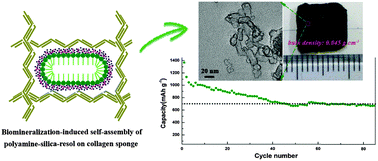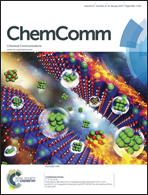Biomineralization-induced self-assembly of porous hollow carbon nanocapsule monoliths and their application in Li–S batteries†
Abstract
A carbon capsule monolith possessing ultrasmall hollow nanocores and ultrathin nanoshells with a high surface area and porosity is synthesized by a facile biomineralization-induced self-assembly approach. As a sulfur host in Li–S batteries, it serves as an excellent solvent-restricted, ionic-electronic conductive ‘nanoreactor’ for sulfur lithiation, enabling superior performance upon cycling.


 Please wait while we load your content...
Please wait while we load your content...